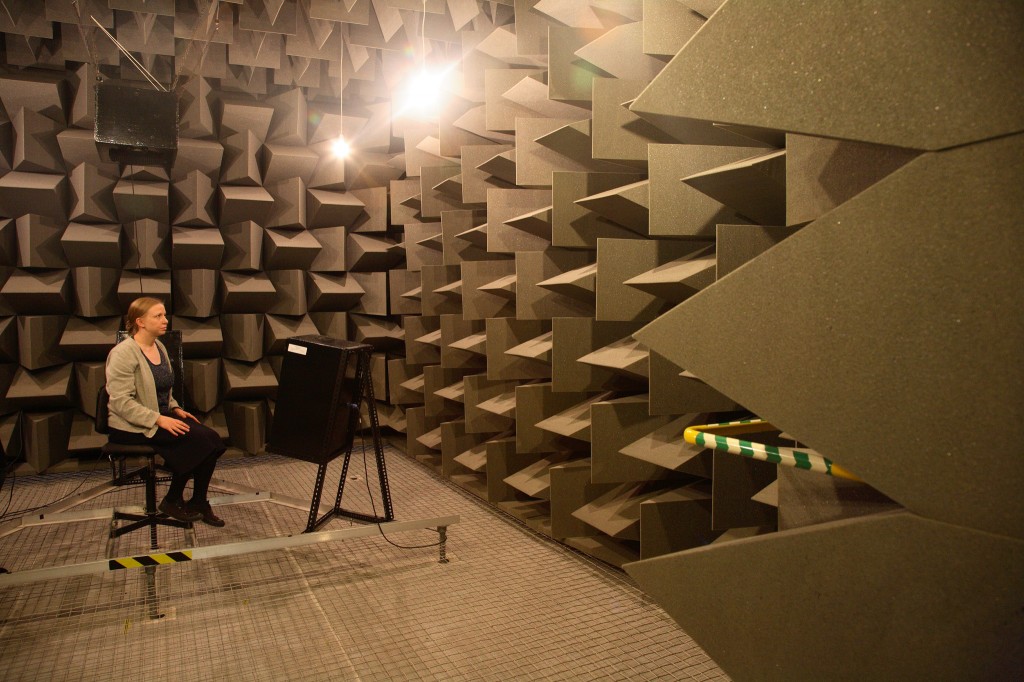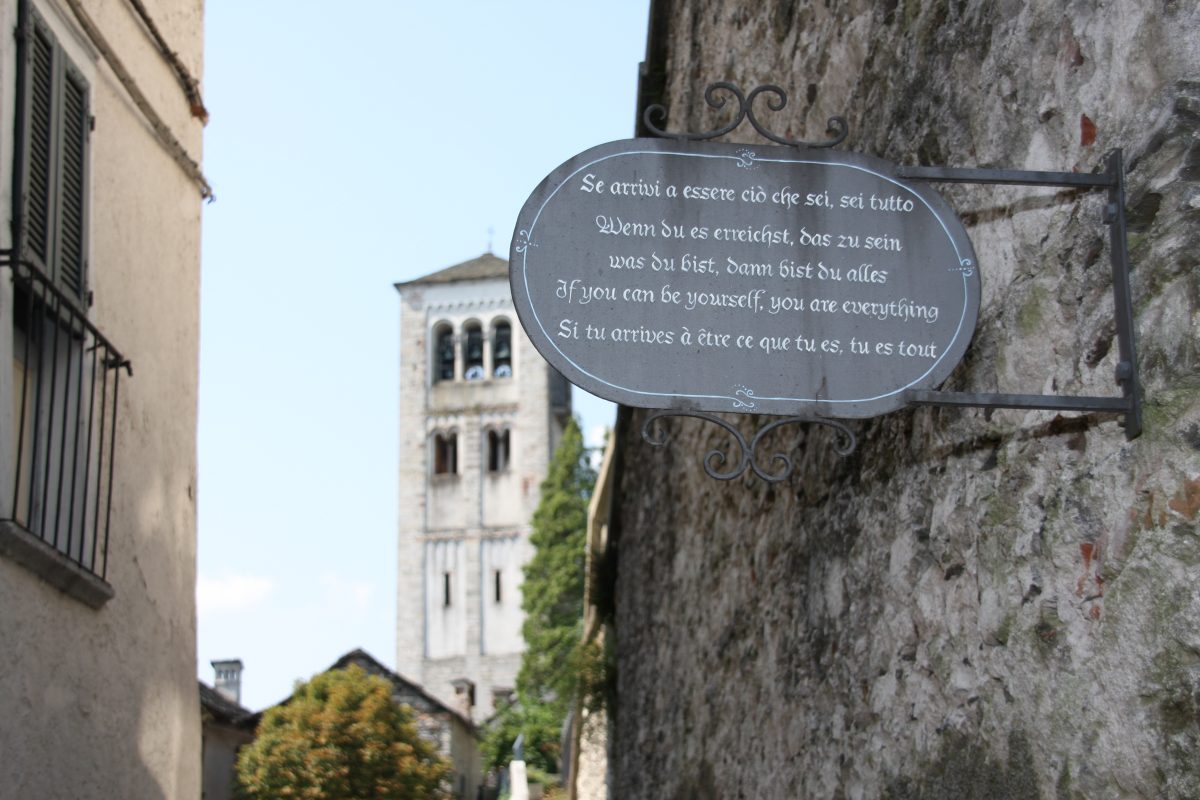
When someone talks in a full anechoic chamber, their voice sounds muffled, like your ears need to pop while in an aircraft. Some visitors find the disjoint between the visual and aural unsettling. This is a room where you can see but not hear walls. One scientific study showed that if you turn the lights out, after a while some visitors will start to have hallucinations in the chamber.
Anechoic chambers are incredibly quiet and the walls of the room don’t reflect sound. This enables acousticians to test products and sound phenomena without interference from outside noises or reflections from the walls. A well designed anechoic chamber is so quiet that no sound enters your ear canals, the only sounds you hear are generated by your own body. You might hear blood moving through your head and/or a high pitched hissing originating in the auditory nerve. But the extraordinary quiet isn’t the main reason why some visitors ask to leave the chamber. The walls, floor and ceiling are covered in absorbent wedges that mean no sound reflects back to you when you talk and this sounds impressive.
This video is the best illustration I know for how quiet the space is:
And this sound of a balloon burst is a great illustration of how the anechoic chamber stops reflections, turning the normal bang into a brief click:
Location and logistics
There are many anechoic chambers in the world, but you need to find a high quality one with an absorbing floor and very low background noise level to get the full aural experience. At Salford University, our anechoic chamber opens up during open days for public tours.




